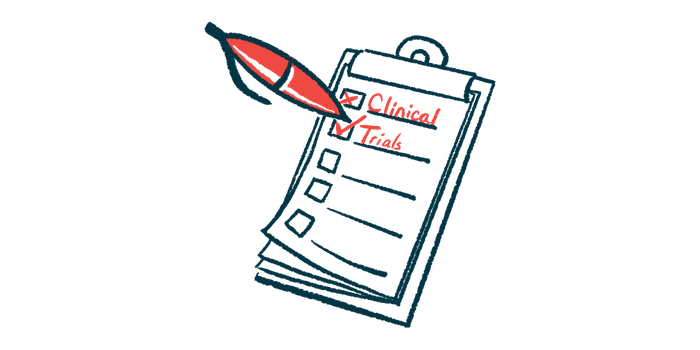GC301 gene therapy improves motor function in IOPD children
Small clinical trial in China also shows gains in cardiac outcomes
Written by |

An experimental gene therapy known as GC301 improved motor function and cardiac outcomes for three out of four infants with infantile-onset Pompe disease (IOPD) in a small clinical trial. The treatment was also well tolerated.
One year after treatment, these three participants had reached milestones such as walking with assistance. A fourth infant also received GC301, a treatment developed by Genecradle Therapeutics, but was withdrawn from the trial after experiencing pneumonia and respiratory failure. The infant ultimately died.
“This study of rAAV9-coGAA [GC301] treatment in four patients with infantile-onset Pompe’s disease provides preliminary results regarding safety and supporting efficacy,” the China-based research team wrote.
The study, “AAV9-Mediated Gene Therapy for Infantile-Onset Pompe’s Disease,” was published in The New England Journal of Medicine. Scientists at Genecradle designed the study and collaborated on data collection and analysis.
Gene therapies offer an alternative approach to ERT
Pompe disease is caused by mutations in the GAA gene, which produces an enzyme of the same name. GAA absence or dysfunction leads to the toxic buildup of glycogen, a complex sugar, in cells, causing Pompe symptoms. IOPD, in which symptoms begin within the first few months of life, affects multiple organs, causing complications such as poor feeding, slow growth, delayed motor development, and difficulty breathing.
Enzyme replacement therapy (ERT) is currently the standard treatment approach for Pompe. Through ERT, people with Pompe receive an engineered version of GAA to ease symptoms, as well as to reduce and slow the progression of disease. However, ERTs do not cross the blood-brain barrier and therefore likely do not reduce glycogen levels in the brain. They may also induce an immune response that reduces treatment efficacy.
Gene therapies take an alternative approach by supplying a working copy of GAA so cells can manufacture the enzyme themselves. They commonly use a modified virus, engineered so as not to cause disease, to deliver DNA to cells. Early results in Pompe patients have suggested safety and efficacy, including improvements in respiratory function. The adeno-associated virus 9 (AAV9), which carries GC301, has been shown in animals to reach multiple types of tissues, including the central nervous system, or brain and spinal cord.
In this study, the research team presented early results from four participants in a Phase 1 clinical trial (NCT05567627, ChiCTR2200063229) of GC301. All had received at least one dose of ERT before the trial. Their age at the study’s start ranged from 2 to 5 months.
All four infants experienced mild or moderate respiratory tract infections after receiving GC301.
“Respiratory issues, such as airway infections and breathing difficulty, are known to rank as the second most common initial symptoms among patients with infantile-onset Pompe disease,” the team wrote. Other side effects included diarrhea and asymptomatic elevations in a marker of heart failure that did not require treatment.
2 of 4 children able to stand and walk without assistance
Over the course of the study, there were five severe adverse events across three patients — three cases of pneumonia, one of bronchitis, or inflammation of the airways leading to the lungs, and one of dysfunction in the heart’s left ventricle. Two children required noninvasive respiratory support after recurrent pneumonia. One of them experienced respiratory failure, prompting the clinicians to recommend invasive breathing support. However, the infant’s parents declined and withdrew consent. The patient died hours after treatment was ceased.
None of the severe events were directly related to GC301, according to the investigators.
One year after dosing, the three surviving children could sit without assistance, and stand and walk with assistance. As of the most recent data cutoff, on Feb. 8, two children were able to stand and walk without assistance.
Scores on the Hammersmith Infant Neurological Examination improved, reflecting better neurological performance, with two participants reaching normal scores by the time they turned 1. These positive neurological outcomes indicate AAV9 successfully crossed the blood-brain barrier, according to the researchers.
In general, cardiac function improved during the study in three participants. However, cases of left ventricle wall thickening and lower cardiac function were noted after respiratory infections. This “underscores the importance of addressing the frequent respiratory infections, which not only increase the risk of pneumonia and respiratory distress or failure but also may affect cardiac function,” the researchers wrote.
Lab results indicated that GAA activity increased after GC301 injection in each patient, and none of the patients tested positive for antibodies targeting GAA.
The researchers suggested larger trials are warranted, and they planned to continue monitoring the surviving participants. “Long-term follow-up with assessment of the safety and efficacy of the drug at 6-month intervals over a 5-year period after the GC301 injection is ongoing,” they wrote.
GC301 is also being studied in a Phase 1/2 trial (NCT05793307) with IOPD children up to 6 months of age that is taking place in China. Another Phase 1/2 study (NCT06391736) is assessing the safety and efficacy of the gene therapy in patients 6 years and older with late-onset Pompe disease. Enrollment is ongoing in a site in China.







